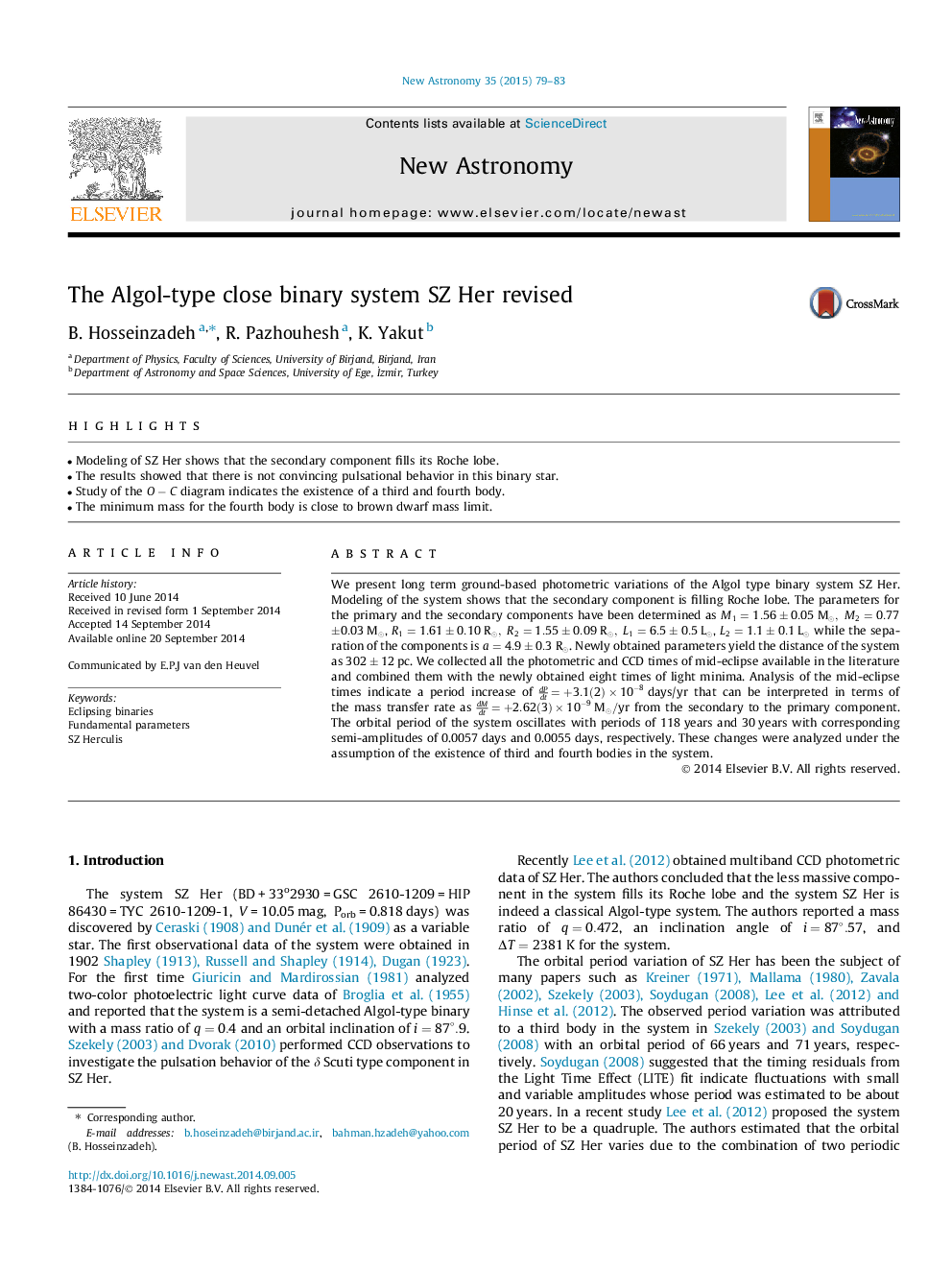| Article ID | Journal | Published Year | Pages | File Type |
|---|---|---|---|---|
| 1778859 | New Astronomy | 2015 | 5 Pages |
•Modeling of SZ Her shows that the secondary component fills its Roche lobe.•The results showed that there is not convincing pulsational behavior in this binary star.•Study of the O − C diagram indicates the existence of a third and fourth body.•The minimum mass for the fourth body is close to brown dwarf mass limit.
We present long term ground-based photometric variations of the Algol type binary system SZ Her. Modeling of the system shows that the secondary component is filling Roche lobe. The parameters for the primary and the secondary components have been determined as M1=1.56±0.05M⊙,M2=0.77±0.03M⊙, R1=1.61±0.10R⊙,R2=1.55±0.09R⊙,L1=6.5±0.5L⊙, L2=1.1±0.1L⊙ while the separation of the components is a=4.9±0.3R⊙. Newly obtained parameters yield the distance of the system as 302±12302±12 pc. We collected all the photometric and CCD times of mid-eclipse available in the literature and combined them with the newly obtained eight times of light minima. Analysis of the mid-eclipse times indicate a period increase of dPdt=+3.1(2)×10-8 days/yr that can be interpreted in terms of the mass transfer rate as dMdt=+2.62(3)×10-9M⊙/yr from the secondary to the primary component. The orbital period of the system oscillates with periods of 118 years and 30 years with corresponding semi-amplitudes of 0.0057 days and 0.0055 days, respectively. These changes were analyzed under the assumption of the existence of third and fourth bodies in the system.
